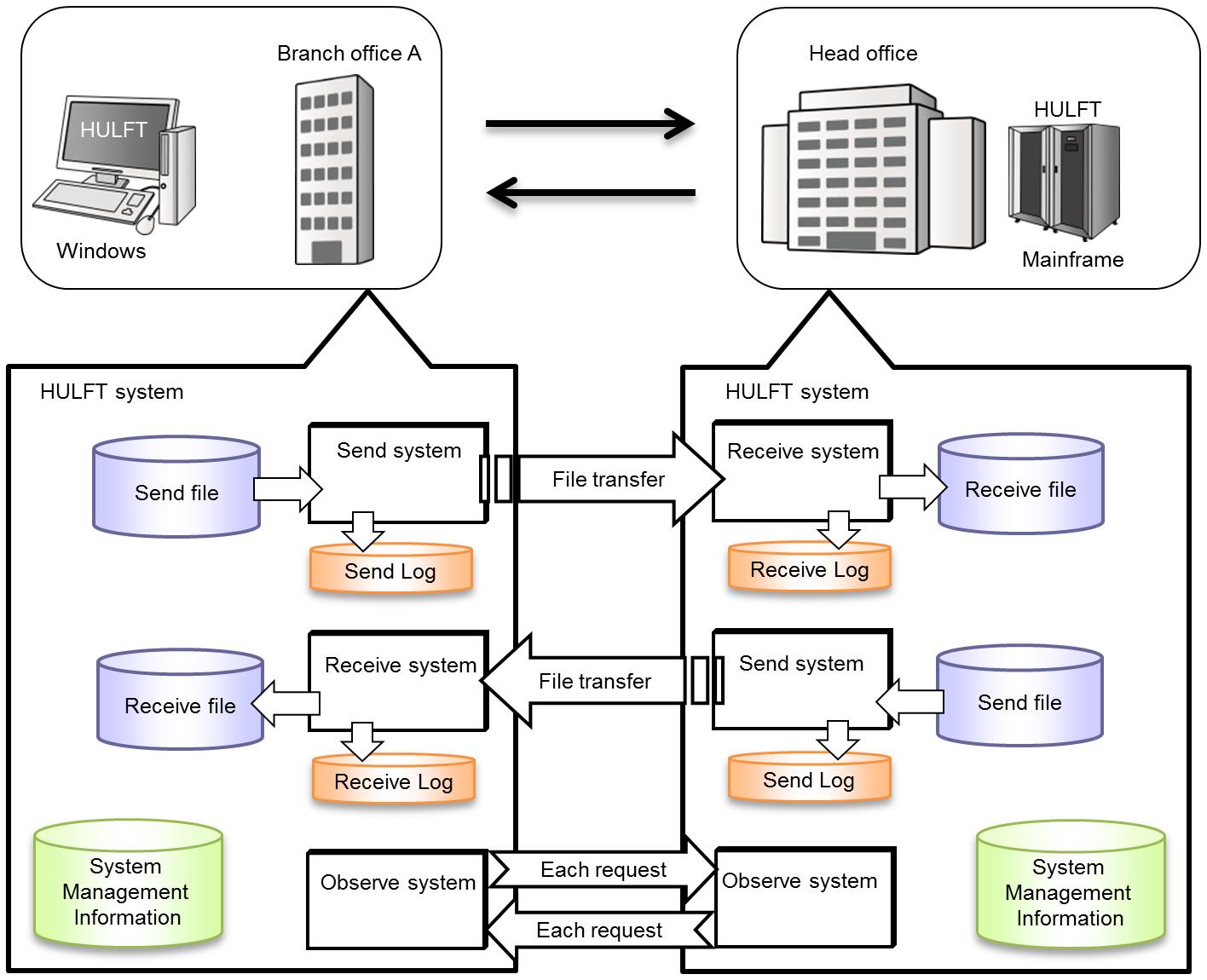Structure of the HULFT system
This section explains the structure of the HULFT system.
For file transfers by the HULFT system, each host is called as shown below:
- Host on the sending side:
-
Host that sends files
- Host on the receiving side:
-
Host that receives files
- Local host:
-
Your machine
- Remote host:
-
Target machine
For example, when the local host is the host on the sending side, the host on the receiving side is a remote host.

Figure 1.2 Structure of HULFT System
- Send System
-
This is a system that transfers files from the host on the sending side to the host on the receiving side in accordance with the settings in the system management information. The file transferred from the sending host is called a 'Send file.'
Refer to How a file transfer works for details.
- Receive System
-
At the host on the receiving side, this system receives data sent from the host on the sending side and creates a file in accordance with the settings in the system management information. The file created on the host on the receiving side is called a 'Receive file.'
Refer to How a file transfer works for details.
- Observe System
-
This is a system that processes requests.
Refer to Observe functions for details.
- System Management Information
-
This is a collective term to indicate a group of information that is required for configuring the system environment of the HULFT system. You can store and modify records of the system management information on the HULFT Management Console or by running a command.
Refer to Information managed by the HULFT system for details.